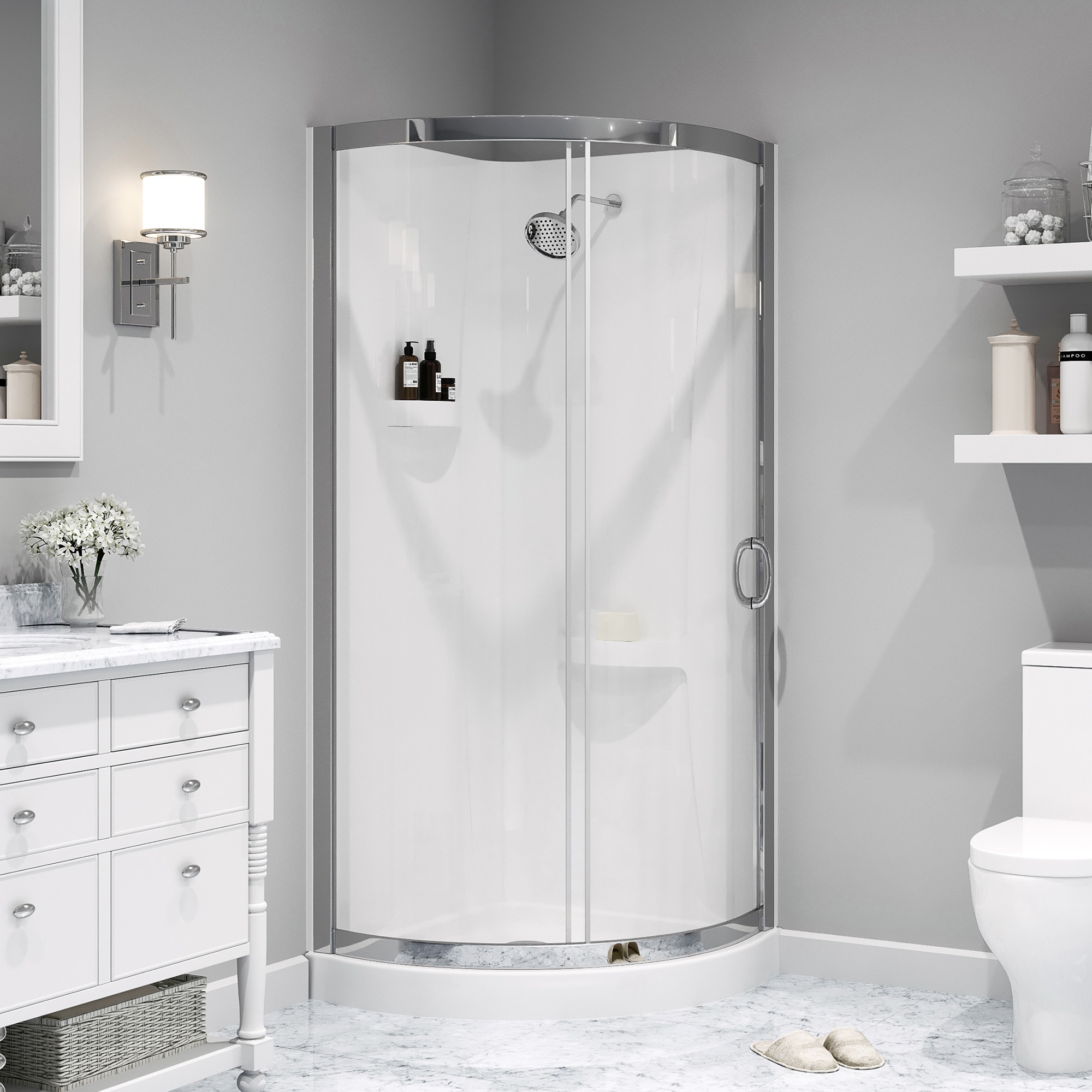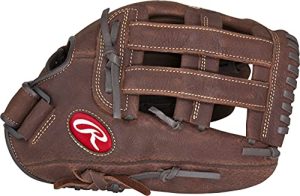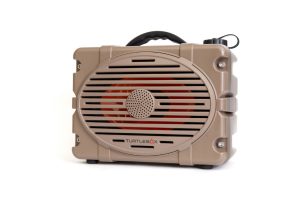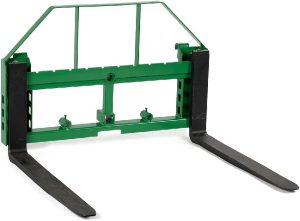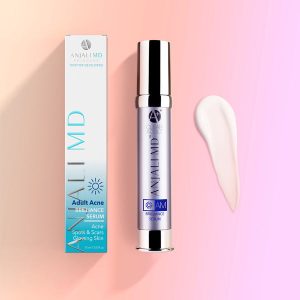Contents
- Understanding The Importance Of Corner Feeders
- Choosing The Right Corner Feeder For Your Stalls
- Installing And Positioning Corner Feeders
- Maintaining And Cleaning Corner Feeders
- Maximizing Efficiency With Corner Feeders
- Customizing Corner Feeders For Specific Needs
- Overcoming Challenges With Corner Feeders
- Enhancing Horse Wellness With Corner Feeders
- Frequently Asked Questions For Corner Feeders For Stalls
- Conclusion
Corner feeders for stalls are essential accessories that allow horses to easily access their feed and keep it secure. These feeders are designed to fit snugly into the corners of the stall, maximizing space and preventing waste.
They are made from durable materials like polyethylene and are easy to clean and maintain. Corner feeders help promote healthy eating habits by keeping hay and grain elevated off the ground, reducing the risk of ingestion of dirt and unwanted particles.
They also prevent horses from spilling or trampling their feed, ensuring they receive the proper nutrition they need to thrive. By utilizing corner feeders in stalls, horse owners can provide a convenient and efficient feeding solution for their equine companions.
Understanding The Importance Of Corner Feeders
Corner feeders for stalls play a vital role in ensuring proper nutrition and convenience for horses. These strategically placed feeders optimize space, minimize wastage, and promote healthy eating habits for equines.
Have you ever wondered why corner feeders are a must-have in horse stalls? These ingenious feeding solutions offer numerous advantages that not only enhance efficiency and convenience but also help save space. Let’s explore the benefits of using corner feeders in horse stalls.
Advantages Of Using Corner Feeders In Horse Stalls:
- Space-saving benefits: By utilizing the corners of the stall, corner feeders efficiently maximize the available space. This allows for ample room for other essential equipment and frees up valuable floor space for the horse to comfortably move around.
- Enhanced efficiency and convenience: Corner feeders offer a practical solution for feeding horses, ensuring that their daily nutritional needs are met without any hassle. Here’s how they enhance efficiency and convenience:
- Easy access: Corner feeders provide horses with easy access to their food, eliminating the need to travel to a separate feeding area. This saves time and effort for both the horse and the caretaker.
- Reduced spillage: By securely attaching to the corner of the stall, these feeders minimize the chances of accidental spills. This not only prevents wastage of feed but also keeps the stall clean and tidy.
- Stress-free feeding: Horses are creatures of habit and thrive on routine. With corner feeders, horses can enjoy their meals in the comfort of their own space, reducing anxiety and promoting a calm feeding environment.
- Improved portion control: Corner feeders typically come with dividers or compartments, allowing for proper portioning of feed. This ensures that each horse receives the appropriate amount of food, preventing overeating or scarcity.
- Durable and long-lasting: Corner feeders are constructed from strong and sturdy materials, designed to withstand the rigors of daily use. Their durability ensures they can endure the weight and movements of horses, providing a reliable feeding solution for years to come.
- Versatility: Corner feeders come in various shapes, sizes, and designs, catering to different stall dimensions and horse needs. Whether you have a small pony or a large horse, there is a corner feeder available to suit your requirements.
Corner feeders offer a host of advantages for horse stalls. From saving space to enhancing efficiency and convenience, these feeding solutions are a valuable addition to any equestrian facility. With their durability and versatility, corner feeders ensure that horses enjoy stress-free, hassle-free feeding, ultimately contributing to their overall health and well-being.
Choosing The Right Corner Feeder For Your Stalls
Choosing the right corner feeder for your stalls is crucial for efficient feeding. These feeders provide easy access and help minimize feed wastage, ensuring that your horses receive balanced nutrition.
When it comes to feeding your horses, choosing the right corner feeder for your stalls is vital for their health and well-being. These feeders are designed to optimize space utilization while keeping the feeding process efficient and safe. With a variety of options available in the market, it’s important to consider some key factors before making a decision.
Here are the considerations when selecting corner feeders:
- Durability: Choose a corner feeder made from sturdy materials, such as heavy-duty plastic or metal, to withstand the daily wear and tear of horse feeding.
- Size and capacity: Consider the size and number of horses you have in your stalls to determine the appropriate feeder size and capacity. Smaller feeders may suffice for ponies or individual horses, while larger ones may be required for multiple horses sharing a stall.
- Ease of cleaning: Opt for feeders that are easy to clean to maintain proper hygiene. Look for designs that allow for quick and convenient cleaning, such as those with removable partitions or drainage holes.
- Safety features: Ensure that the corner feeder you choose has safety features to minimize the risk of injury. Look for smooth edges, sturdy brackets or attachments, and secure fastening mechanisms to keep the feeder securely in place.
- Versatility: Consider the versatility of the corner feeder and its ability to accommodate different types of feed, such as hay, grain, or supplements. Look for adjustable options that can be customized to meet your horses’ specific dietary needs.
Now, let’s explore the different types of corner feeders available in the market.
Different Types Of Corner Feeders Available In The Market
When it comes to corner feeders, there are various options to choose from. Each type offers unique benefits and considerations, so it’s essential to weigh your options before making a purchase. Here are the different types of corner feeders available:
- Wall-mounted corner feeders: These feeders are attached directly to the stall walls, utilizing the corners efficiently. They are known for their stability and durability, making them suitable for horses of all sizes.
- Freestanding corner feeders: These feeders are designed to stand independently in the corner of the stall, eliminating the need for wall attachment. They offer flexibility and are easy to move around when necessary.
- Corner hay racks: If you’re primarily focused on feeding hay, corner hay racks are an excellent option. These feeders have sturdy metal grids or nets that allow horses to access hay while minimizing wastage.
- Partitioned corner feeders: For multiple horses sharing a stall, partitioned corner feeders provide separate feeding compartments. This design helps prevent food aggression and ensures each horse receives an appropriate portion.
- Corner feed tubs: These tubs are ideal for feeding grain or supplements and come in various shapes and sizes. They can be attached to the stall wall or placed on the ground, depending on your preferences.
Factors to keep in mind for optimal space utilization:
When choosing a corner feeder, optimizing space utilization is crucial to ensure a comfortable and safe feeding environment for your horses. Here are the factors to consider:
- Height: Select a corner feeder with an appropriate height that allows horses to reach their feed comfortably without straining or spilling.
- Positioning: Install the corner feeder at a suitable height and angle to prevent feed from spilling out or getting pushed around.
- Accessibility: Ensure that the corner feeder is easily accessible to your horses, especially if you have older or less mobile equines.
- Stall layout: Take into account the stall layout, door positioning, and the horses’ behavior to determine the best location for the corner feeder.
- Space efficiency: Opt for compact designs that make the most of the available space in the corner, allowing horses to move around freely.
By considering these factors and exploring the various types of corner feeders available in the market, you can make an informed decision to provide your horses with a safe and efficient feeding experience.
Installing And Positioning Corner Feeders
Corner feeders for stalls provide convenient and practical solutions for installing and positioning feeders in tight spaces. These feeders are designed to optimize space usage while ensuring easy access for horses to their food.
When it comes to installing corner feeders in stalls, there are some best practices that you should follow. Proper positioning of the feeders is essential to ensure easy access for the horses. Additionally, securing the feeders correctly is crucial for stability and safety.
Let’s take a closer look at each of these aspects:
Best Practices For Installing Corner Feeders In Stalls:
- Choose a sturdy and durable corner feeder that can withstand the weight and movements of the horses.
- Install the feeders at an appropriate height to ensure comfortable eating position for the horses.
- Ensure that the feeders are securely attached to the stall walls, using strong mounting brackets or screws.
- Regularly inspect the feeders for any signs of wear and tear, and replace them if necessary.
- Consider using feeders with rounded edges or smooth surfaces to prevent any injuries to the horses.
Proper Positioning Of Corner Feeders For Easy Access:
- Place the corner feeders at a convenient location within the stall, away from any doors or gates.
- Ensure that there is enough space around the feeders for the horses to approach and eat comfortably.
- Position the feeders at a height that allows the horses to reach their feed without straining or stretching.
- Consider the size and number of horses in the stall when determining the placement of the feeders.
Securing Corner Feeders To Ensure Stability And Safety:
- Use heavy-duty mounting brackets or screws to attach the feeders securely to the walls of the stall.
- Double-check that the feeders are stable and not wobbly before allowing the horses access to them.
- Regularly inspect the mounting hardware to ensure it remains tight and secure.
- If necessary, reinforce the installation by adding additional brackets or support to prevent any accidents.
Installing and positioning corner feeders correctly is essential for the well-being of the horses and the overall functionality of the stalls. By following the best practices mentioned above, you can create a safe and accessible feeding area for your equine companions.
Maintaining And Cleaning Corner Feeders
Easily maintain and clean corner feeders designed for stalls with our practical tips. Keep your horse’s feeding area tidy and hygienic for their health and comfort.
Tips For Regular Maintenance Of Corner Feeders:
- Check the corner feeders daily for any signs of damage or wear.
- Ensure that all fastenings and brackets are secure and tightened properly.
- Clean the feeders regularly to prevent the accumulation of dirt and debris.
- Inspect the feeders for any sharp edges or protruding parts that could potentially harm the horses.
- Monitor the feeder’s capacity and refill it as necessary to ensure a constant supply of feed.
- Remove any leftover or spoilt feed from the feeder to prevent contamination and pest infestation.
Cleaning Techniques To Keep Corner Feeders Hygienic:
- Start by emptying the feeder of any remaining feed.
- Use a brush to remove loose dirt, dust, and debris from the corners and edges of the feeder.
- Rinse the feeder thoroughly with clean water to remove any remaining dirt.
- For stubborn stains, use a mild soap or detergent and scrub gently.
- Rinse the feeder again to ensure all cleaning agents are removed.
- Allow the feeder to air dry completely before refilling with fresh feed.
Extending The Lifespan Of Corner Feeders Through Proper Care:
- Store the feeders in a dry and sheltered area when not in use to prevent exposure to harsh weather conditions.
- Apply a protective coating or paint to metal feeders to prevent rust and corrosion.
- Avoid using abrasive cleaning tools or harsh chemicals that may damage the feeder’s surface.
- Regularly inspect the feeders for any signs of wear, such as cracks or breakage, and address them promptly.
- Educate stable staff and handlers on the proper handling and care of feeders to prevent unnecessary damage.
- Consider investing in high-quality feeders built to withstand constant use and wear.
By following these tips and cleaning techniques, you can ensure that your corner feeders remain in excellent condition, promoting hygienic feeding practices and maximizing their lifespan. Regular maintenance and proper care are essential for providing a safe and clean environment for your horses.
Maximizing Efficiency With Corner Feeders
Maximize stall efficiency with corner feeders, designed to save space and streamline feeding routines. These innovative solutions optimize horse care by providing convenient access to food in the corners of the stalls.
Promoting Healthy Eating Habits With Corner Feeders
- Corner feeders are an excellent way to promote healthy eating habits for horses by creating a dedicated space for feeding.
- Here’s how corner feeders can contribute to your horse’s wellbeing:
- Minimizing stress and competition: With corner feeders, multiple horses can eat simultaneously without feeling the need to compete for food. This reduces stress and ensures each horse has adequate time to consume its meal.
- Encouraging natural feeding posture: Corner feeders are designed to mimic grazing behavior, encouraging horses to assume a natural head-down position while eating. This helps prevent respiratory issues and digestive problems.
- Reducing feed contamination: Placing corner feeders away from manure or urine areas minimizes the chances of feed contamination, promoting healthier eating habits.
- Creating a calm feeding environment: Corner feeders help create a designated feeding area, separate from other activities within the stall. This provides horses a peaceful environment, free from distractions.
Minimizing Food Wastage Through Controlled Access
- Corner feeders offer a controlled way to manage the amount of feed provided to horses, reducing food wastage. Here’s how they accomplish this:
- Portion control: With corner feeders, you can measure and provide appropriate portions of feed, ensuring that each horse receives an adequate amount. This prevents overeating and eliminates excessive food wastage.
- Reducing spillage: The design of corner feeders minimizes the spillage of feed, ensuring that horses can access every bit of their meal without excessive loss.
- Preventing trampling and soiling: By keeping the feed elevated and secure within a corner feeder, the chances of the horses stepping on or soiling their feed are significantly reduced. This prevents wastage caused by contamination.
Improving Feeding Routines And Saving Time With Corner Feeders
- Efficient feeding routines are essential for a horse’s well-being. Here’s how corner feeders can improve feeding routines while saving time:
- Easy access and removal: Corner feeders are easily accessible, allowing for quick and effortless placement and removal of feed. This streamlines the feeding process, saving time and effort for horse owners and caregivers.
- Easy cleaning and maintenance: Corner feeders are designed with durability and ease of cleaning in mind. With removable parts and simple cleaning techniques, maintaining cleanliness becomes hassle-free, saving time in the long run.
- Reducing feeding frequency: Corner feeders can hold a sufficient amount of feed, reducing the frequency of refilling. This benefits horse owners who have demanding schedules, allowing them to spend more time on other essential tasks or activities.
- Ensuring consistency: By using corner feeders, horses can establish regular eating routines. This helps in maintaining their overall health and well-being.
Embracing corner feeders not only promotes healthy eating habits for horses, but also minimizes food wastage and enhances feeding routines. With their numerous benefits, corner feeders are a valuable addition to any stable or stall.
Customizing Corner Feeders For Specific Needs
Customize corner feeders to meet specific needs in stalls. These versatile feeders are tailored to optimize feeding convenience and efficiency. From adjustable height settings to removable partitions, they provide a personalized feeding solution for every horse.
When it comes to setting up an ideal feeding system for your horses, customizing corner feeders can be a game-changer. These versatile feeders not only optimize space utilization in your stalls but also cater to the unique needs of your equine companions.
By adapting corner feeders to their specific requirements, you ensure that they receive adequate nutrition and supplements. Let’s explore the key features to consider and how you can customize corner feeders for different horse breeds, sizes, and specialized diets.
Features To Look For When Customizing Corner Feeders:
- Durability: Choose corner feeders made from sturdy materials such as heavy-duty plastics or metal, as they can withstand the strength of your horses and their feeding behavior.
- Ease of cleaning: Opt for corner feeders with smooth surfaces and removable components for hassle-free cleaning and maintenance.
- Safety design: Ensure that the feeder’s design eliminates sharp edges, potential entrapment hazards, and the risk of horses getting their hooves caught.
- Size and capacity: Select corner feeders that are appropriate for the size and number of horses in your stalls. Consider the feeder’s capacity to provide enough space for the required amount of feed or forage.
- Mounting options: Look for corner feeders that offer multiple mounting options, allowing you to attach them securely to the stalls’ walls or fences.
Catering To Different Horse Breeds And Sizes:
- Adjustable height: Some corner feeders come with height-adjustable features, accommodating horses of different sizes and ensuring optimal feeding positions.
- Multiple compartments: For barns with multiple horse breeds or horses requiring different feeds, corner feeders with segmented compartments can help separate the feeds conveniently.
- Size variations: Check for corner feeders available in various sizes to accommodate larger breeds or provide ample feeding space for multiple horses simultaneously.
Adapting Corner Feeders For Specialized Diets Or Supplements:
- Removable dividers: If your horses have specific dietary requirements, consider customizing corner feeders with removable dividers. This allows you to separate their meals or incorporate supplements without mixing them with regular feed.
- Additional attachments: Some corner feeders offer optional attachments or accessories, such as hay racks or hay nets, allowing you to easily provide hay or forage alongside standard feed.
- Supplement compartments: Look for corner feeders with built-in compartments or hooks designed to securely hold supplements or medications, ensuring easy access for administration.
With the ability to customize corner feeders according to your horses’ needs, you can create an efficient feeding system that promotes their well-being and dietary balance. Whether it’s adjusting the height for different breeds, providing separate compartments for specialized diets, or incorporating supplement holders, your horses will thank you for their personalized feeding experience.
Remember, a well-designed corner feeder not only enhances their nutrition but also makes feeding time more convenient for you as their caretaker.
Overcoming Challenges With Corner Feeders
Discover how corner feeders for stalls can help horse owners overcome various challenges in feeding practices. These innovative solutions ensure easy access to food, optimizing feeding efficiency and promoting healthy eating habits for horses. Experience the benefits of corner feeders today.
Corner feeders are a popular choice for horse stalls as they maximize space efficiency and provide horses with easy access to their feed. However, there are challenges that horse owners may encounter when using corner feeders. In this section, we will address potential issues and risks with corner feeders and provide solutions to overcome them.
Addressing Potential Issues And Risks With Corner Feeders
- Feed contamination: As horses feed from the corner feeders, there is a possibility of feed getting contaminated with dirt, dust, or manure. To address this issue:
- Regularly clean and sanitize the corner feeders to ensure the feed remains clean and free from contaminants.
- Install feed grills or screens to prevent horses from dropping feed onto the ground and minimizing feed wastage.
- Bullying and competition: In a herd setting, dominant horses may prevent others from accessing the corner feeders, leading to bullying and competition for feeding space. Here are some tips to prevent this issue:
- Provide multiple corner feeders within the stall to distribute feeding spots evenly and reduce competition.
- Feed horses separately, either by using individual feeding stalls or utilizing feeding times to ensure each horse receives their fair share without interference from dominant horses.
Preventing Injuries And Ensuring Horse Safety
While corner feeders are convenient, they can pose risks to the safety and well-being of horses. Here are some measures to prevent injuries:
- Physical injuries: Horses may accidentally get their hooves or legs caught in the corner feeders. To prevent this:
- Choose corner feeders with rounded edges or smooth surfaces to reduce the risk of cuts or abrasions.
- Ensure proper installation of the corner feeders, securely attaching them to the stall walls to prevent any wobbling or movement.
- Choking hazards: Feeding hay or other long-stemmed forage in corner feeders can increase the risk of horses choking. Take the following precautions:
- Use hay nets, slow feeder bags, or small mesh hay feeders to slow down the rate of forage consumption and reduce the risk of choking.
- Regularly inspect the corner feeders for any small or sharp objects that could cause injury.
Troubleshooting Common Problems For Smooth Feeding Experiences
Despite taking preventive measures, issues may still arise when using corner feeders. Here are some common problems and their solutions:
- Feed wastage: Horses may inadvertently scatter or waste their feed while feeding from the corner feeders. To troubleshoot this problem:
- Choose corner feeders with built-in feed-saving features, such as anti-waste edges or lips, to minimize feed wastage.
- Monitor feeding behavior and adjust the amount of feed provided to prevent overeating or excessive scattering.
- Preference for certain corners: Some horses may develop a preference for feeding from a particular corner feeder, causing uneven wear and tear. To overcome this problem:
- Regularly rotate the corner feeders within the stall to encourage horses to utilize all feeding spots equally.
- Introduce environmental enrichment, such as toys or hanging feeders, to engage horses and discourage corner fixation.
By addressing potential issues, ensuring horse safety, and troubleshooting common problems, horse owners can create a safe and enjoyable feeding experience for their equine companions. The proper use of corner feeders allows for efficient feeding while minimizing risks and promoting horse well-being.
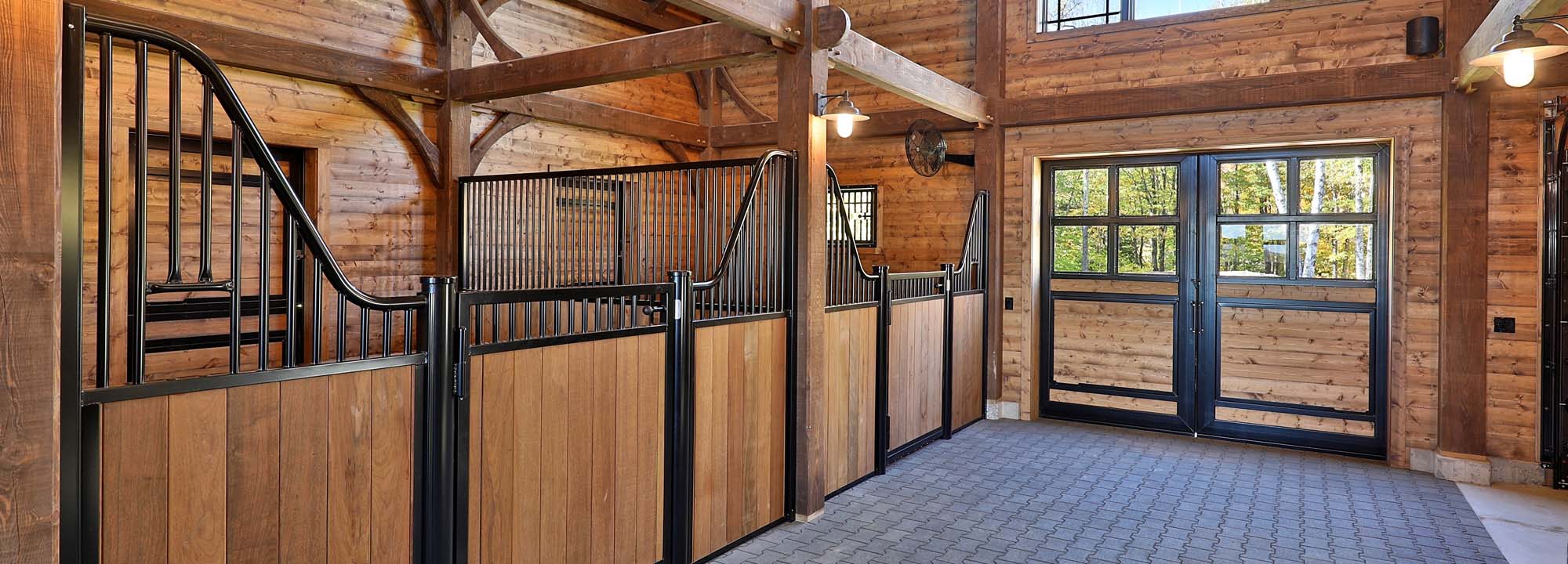
Credit: downunderhorsemanship.com
Enhancing Horse Wellness With Corner Feeders
Enhance your horse’s wellness with corner feeders, designed specifically for stall use. These convenient feeders promote healthy eating habits and help reduce food wastage.
Horses are magnificent creatures that require proper care and attention to ensure their overall wellbeing. When it comes to feeding time, it’s essential to create an environment that promotes their natural feeding positions and supports their body alignment. This is where corner feeders come into play.
These specifically designed feeders offer numerous benefits that enhance horse wellness. Let’s explore how corner feeders can positively impact your horse’s health.
Encouraging Natural Feeding Positions And Body Alignment:
- Promotes natural posture: Corner feeders encourage horses to assume a more natural head and neck position while eating, closely mimicking their grazing posture in the wild.
- Maintains body alignment: By positioning the feeder in a corner, horses must turn their bodies slightly, which helps promote proper alignment of their spine and limbs.
- Reduces strain on neck and back: The elevated position of corner feeders allows horses to eat comfortably without excessively flexing their neck or straining their back muscles.
Promoting Digestive Health Through Proper Feeding Techniques:
- Slower and more controlled eating: Corner feeders prevent horses from gulping down their meals, as they need to navigate the feeder’s corners. This slower eating pace aids digestion by allowing more time for saliva production and proper chewing.
- Preventing food wastage: Corner feeders limit food spillage and wastage, ensuring horses eat the intended portions and reducing the likelihood of overeating or undereating.
- Encourages forage consumption: Corner feeders make it easier to incorporate hay or forage into a horse’s diet, promoting the natural grazing behavior that is vital for proper digestive health.
Reducing Stress And Anxiety During Meal Times With Corner Feeders:
- Establishes feeding routine: Consistency and routine are essential for horses’ mental well-being. Using corner feeders helps establish a structured feeding schedule, reducing anxiety and uncertainty around mealtimes.
- Eliminates competition for food: Providing individual corner feeders ensures that each horse has its designated feeding space, minimizing potential conflicts and reducing stress during feeding times.
- Creates a calm eating environment: The corner feeding setup promotes a quieter and more secluded eating space, shielding horses from distractions and creating a calm environment that reduces mealtime stress and anxiety.
By incorporating corner feeders into your horse’s feeding routine, you can enhance their overall wellness and promote a healthier lifestyle. These feeders encourage natural feeding positions, support proper body alignment, promote digestive health, and reduce stress and anxiety during meal times.
Make sure to provide your horses with the best care possible by considering the benefits of corner feeders.
Frequently Asked Questions For Corner Feeders For Stalls
Do Slow Feeders For Horses Work?
Yes, slow feeders for horses are effective. They help regulate the horse’s eating pace, promoting better digestion and reducing the risk of colic, obesity, and other health issues. Slow feeders improve a horse’s overall well-being by mimicking their natural grazing behavior.
These feeders are designed with small openings or grid-like patterns that limit the amount of hay or forage a horse can access at once, encouraging them to eat slowly and extend their mealtime. This prevents horses from consuming large amounts of food quickly, which can result in digestive problems.
Slow feeders also promote mental stimulation and prevent boredom, as horses have to work to obtain their feed gradually. Overall, slow feeders provide a more natural and healthier way for horses to eat, ensuring their nutritional needs are met while avoiding potential health risks.
What Is A Porta Grazer?
A porta grazer is a type of slow feeding hay bag that helps mimic a horse’s natural grazing behavior. It is designed to slow down a horse’s hay consumption, allowing them to eat in a more natural and healthy manner.
The porta grazer consists of a durable bag with small holes that limit the amount of hay a horse can access at one time. By slowing down their eating, porta grazers can help prevent issues like colic, boredom, and weight gain.
This feeding system also encourages horses to eat smaller, more frequent meals throughout the day, which is closer to their natural grazing pattern. Overall, using a porta grazer can improve a horse’s digestion, mental well-being, and overall health.
What Is A Slow Feeder For Horses?
A slow feeder for horses is a device or feeding system designed to slow down the rate at which horses eat their hay or other feed. It helps to mimic their natural grazing behavior and prevents them from consuming large amounts of food too quickly.
By using a slow feeder, horses are encouraged to eat smaller and more frequent meals, which is healthier for their digestive system. It also helps to prevent boredom and reduces the risk of health issues such as colic, obesity, and behavioral problems.
Slow feeders come in various designs, including hanging nets, grids, or specially designed feeding troughs with small openings and obstacles that make it more challenging for the horses to grab large amounts of feed at once. Overall, slow feeders improve the well-being and health of horses by ensuring a more natural and controlled feeding experience.
What Kind Of Round Bale Feeder For Horses?
The best kind of round bale feeder for horses is a hay ring or a feeder with a solid base. Hay rings help prevent waste and keep the round bale contained, making it easier for horses to access the hay.
This type of feeder also reduces the chance of horses stepping on or trampling the hay. Another option is a feeder with a solid base and a roof, which protects the hay from rain and helps keep it dry. Avoid using traditional hay racks or feeders with openings that allow horses to pull out large amounts of hay, as this can result in waste and an unbalanced diet.
Opting for a round bale feeder designed specifically for horses ensures that they have easy access to hay while minimizing waste.
Conclusion
Corner feeders for stalls provide a practical and efficient solution for feeding horses in their stable environment. These feeders not only allow for easy access to hay and grain, but also help promote healthier eating habits and reduce food wastage.
With their sturdy construction and innovative design, corner feeders ensure that horses can safely consume their meals without the risk of spills or injury. Additionally, the elevated placement of the feeders helps prevent dust and debris from contaminating the feed, further safeguarding the horse’s health.
Investing in corner feeders can greatly benefit both horse owners and their equine companions. By streamlining the feeding process, these feeders save time and effort, allowing for more efficient stable management. Furthermore, utilizing corner feeders can potentially improve the overall well-being of horses by encouraging natural feeding behaviors.
With the right choice of materials and installation, corner feeders can be a long-lasting and cost-effective solution for feeding horses in stalls. So, if you’re looking to optimize your stable’s feeding system, consider incorporating corner feeders to enhance both convenience and equine health.

